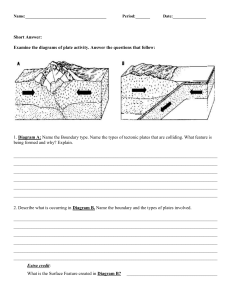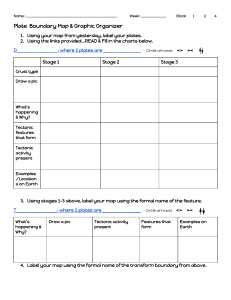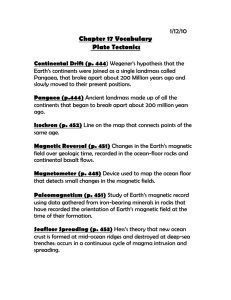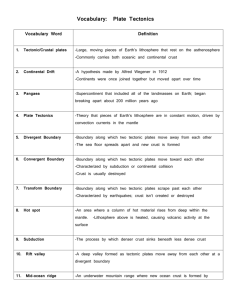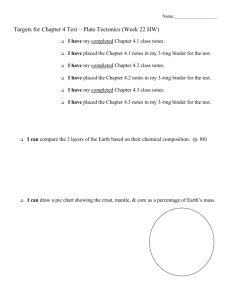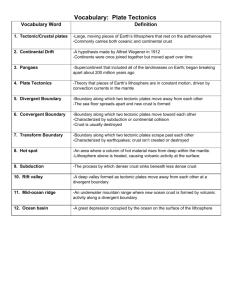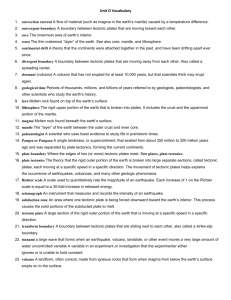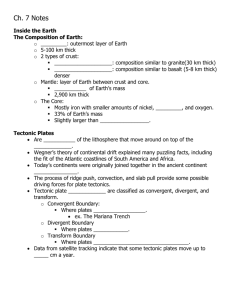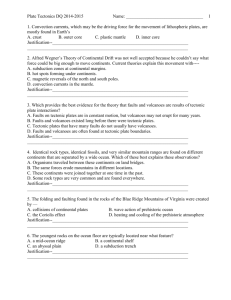6th Grade Science: Plate Tectonics Assessment
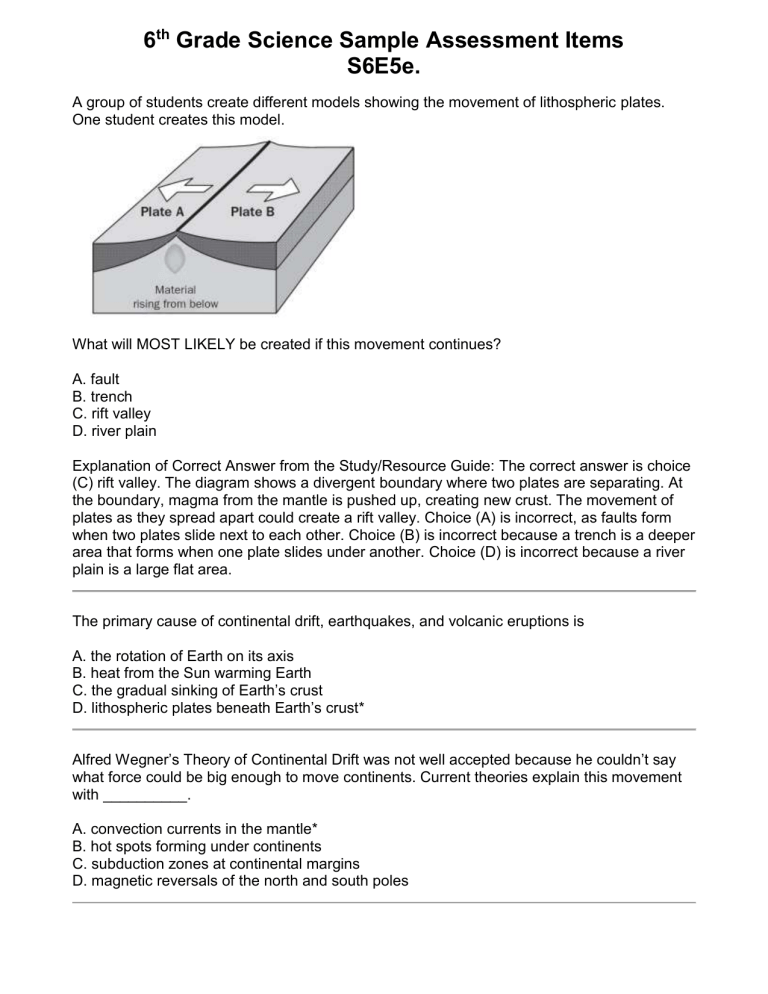
6 th Grade Science Sample Assessment Items
S6E5e.
A group of students create different models showing the movement of lithospheric plates.
One student creates this model.
What will MOST LIKELY be created if this movement continues?
A. fault
B. trench
C. rift valley
D. river plain
Explanation of Correct Answer from the Study/Resource Guide: The correct answer is choice
(C) rift valley. The diagram shows a divergent boundary where two plates are separating. At the boundary, magma from the mantle is pushed up, creating new crust. The movement of plates as they spread apart could create a rift valley. Choice (A) is incorrect, as faults form when two plates slide next to each other. Choice (B) is incorrect because a trench is a deeper area that forms when one plate slides under another. Choice (D) is incorrect because a river plain is a large flat area.
The primary cause of continental drift, earthquakes, and volcanic eruptions is
A. the rotation of Earth on its axis
B. heat from the Sun warming Earth
C. the gradual sinking of Earth’s crust
D. lithospheric plates beneath Earth’s crust*
Alfred Wegner’s Theory of Continental Drift was not well accepted because he couldn’t say what force could be big enough to move continents. Current theories explain this movement with __________.
A. convection currents in the mantle*
B. hot spots forming under continents
C. subduction zones at continental margins
D. magnetic reversals of the north and south poles
6 th Grade Science Sample Assessment Items
S6E5e.
Identify the type of plate boundary shown in the diagram above and describe the geological events that could occur at this boundary.
The most common cause of earthquakes is
—
A. the sinking of the ocean floor
B. movements in the Earth’s crust*
C. giant tidal waves called tsunamis
D. unequal heating of the atmosphere
The mountain shown is composed of deformed sedimentary layers. They are located near a tectonic plate boundary and are still increasing in elevation due to
—
A. colliding tectonic plates*
B. subduction of a tectonic plate
C. seafloor spreading of tectonic plates
D. transform faulting of a tectonic plate
6 th Grade Science Sample Assessment Items
S6E5e.
Which of these pictures shows the last in the sequence of events? (Correct Ans: B)
Where do most geologic events take place?
At which type of boundary do tectonic plates move apart?
Which type of boundary does the diagram to the right illustrate?
The diagram to the right illustrates what type of geologic event? Explain.
